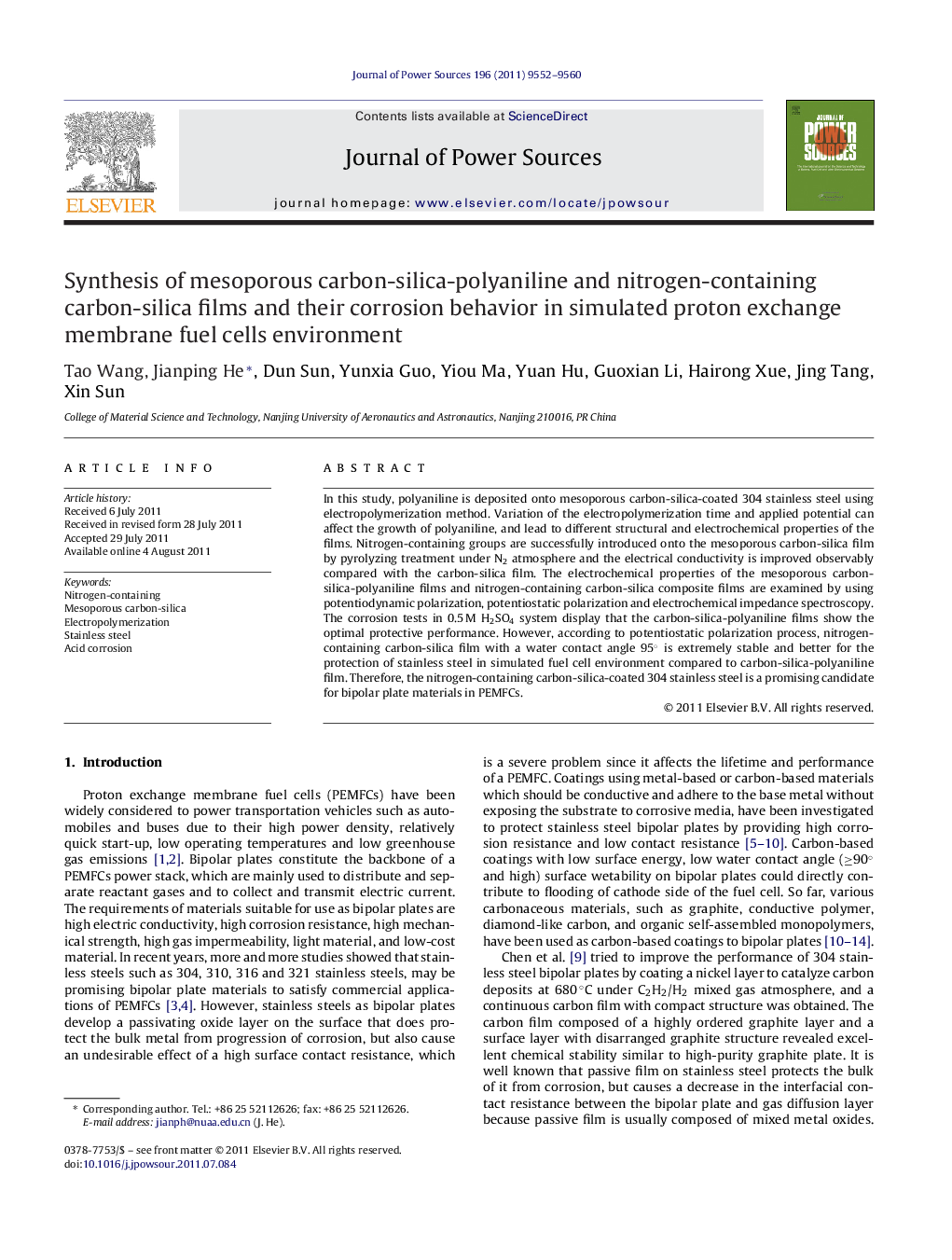| Article ID | Journal | Published Year | Pages | File Type |
|---|---|---|---|---|
| 1284708 | Journal of Power Sources | 2011 | 9 Pages |
In this study, polyaniline is deposited onto mesoporous carbon-silica-coated 304 stainless steel using electropolymerization method. Variation of the electropolymerization time and applied potential can affect the growth of polyaniline, and lead to different structural and electrochemical properties of the films. Nitrogen-containing groups are successfully introduced onto the mesoporous carbon-silica film by pyrolyzing treatment under N2 atmosphere and the electrical conductivity is improved observably compared with the carbon-silica film. The electrochemical properties of the mesoporous carbon-silica-polyaniline films and nitrogen-containing carbon-silica composite films are examined by using potentiodynamic polarization, potentiostatic polarization and electrochemical impedance spectroscopy. The corrosion tests in 0.5 M H2SO4 system display that the carbon-silica-polyaniline films show the optimal protective performance. However, according to potentiostatic polarization process, nitrogen-containing carbon-silica film with a water contact angle 95° is extremely stable and better for the protection of stainless steel in simulated fuel cell environment compared to carbon-silica-polyaniline film. Therefore, the nitrogen-containing carbon-silica-coated 304 stainless steel is a promising candidate for bipolar plate materials in PEMFCs.
Graphical abstractThe mesoporous nitrogen-containing C-SiO2 composite film has been achieved by spin-coating and electropolymerization method. We believe that the mesoporous C-SiO2-N films have a potential application as a protect coating of bipolar plate material.Figure optionsDownload full-size imageDownload as PowerPoint slideHighlights► The presence of N can improve the electrical conductivity of mesoporous C-SiO2 film. ► The mesoporous film was obtained by spin-coating and electropolymerization method. ► C-SiO2-N film exhibited a high surface tension with water contact angle close to 95°. ► The mesoporous film exhibited excellent protective performance in 0.5 M H2SO4.
